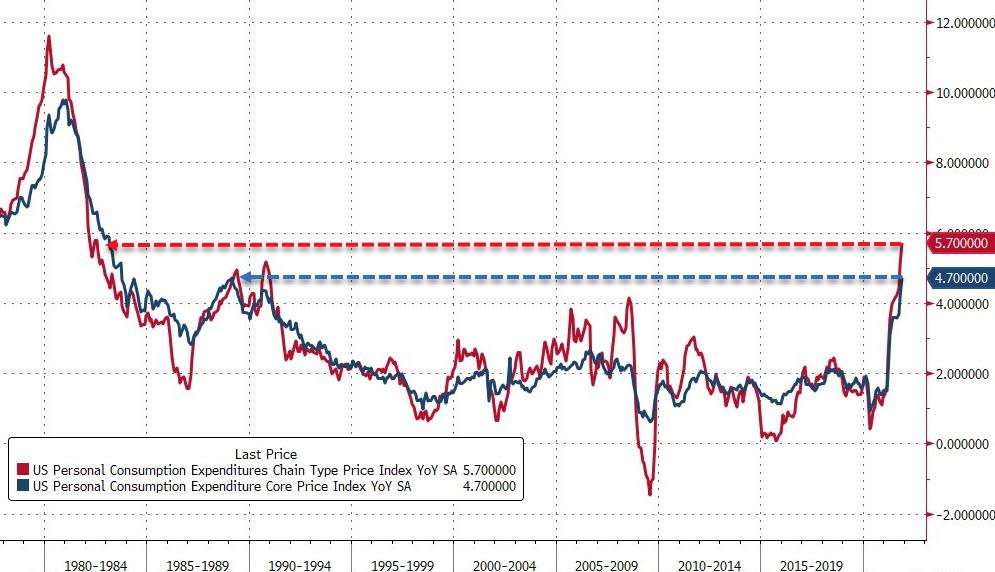Today's PCE reading showed that inflation continued to accelerate in November, which is definitely not what the Fed wants to hear. The personal consumption expenditure price index in the US increased 5.7 % from a year earlier in November, the most in 39 years, reflecting increases in both goods and services. Energy prices were up 34% while food prices increased 5.6%. The Fed's favorite inflation indicator - Core PCE prices, which exclude food and energy increased 0.5% mom in November of 2021, higher than forecasts of 0.4% and same as that of an upwardly revised 0.5% increase in the previous month. The annual rate accelerated to 4.7%, higher than expectations of 4.5%.
 The headline PCE deflator jumped 5.7% YoY, which is the highest rise in 39 Years. Core PCE price index accelerated 4.7%. That was the largest increase since February 1989 and followed a 4.2% year-on-year advance in October. Source: Bloomberg via ZeroHedge
The headline PCE deflator jumped 5.7% YoY, which is the highest rise in 39 Years. Core PCE price index accelerated 4.7%. That was the largest increase since February 1989 and followed a 4.2% year-on-year advance in October. Source: Bloomberg via ZeroHedge
Today's figures from Commerce indicate that rising prices may have a negative impact on consumer spending. Americans decreased purchases of goods and spent more on services last month, while personal disposable incomes adjusted for inflation decreased 0.2% in November from the previous month.
US policymakers have become worried that rising prices could become entrenched and signaled acceleration of the tapering process earlier this month as they are preparing to raise borrowing costs in the first half of 2022. Currently market pricing suggests that the first rate hike will most likely be announced during the May meeting, however if the current situation does not improve FED may decide to act in March.
BREAKING: Ifo Index Slightly Above Expectations. DE40 limits jump from the session start
Economic calendar: Fed’s interest-rate decision on Wednesday 📄
Morning wrap (27.10.2025)
Daily Summary: CPI down, Markets Up


